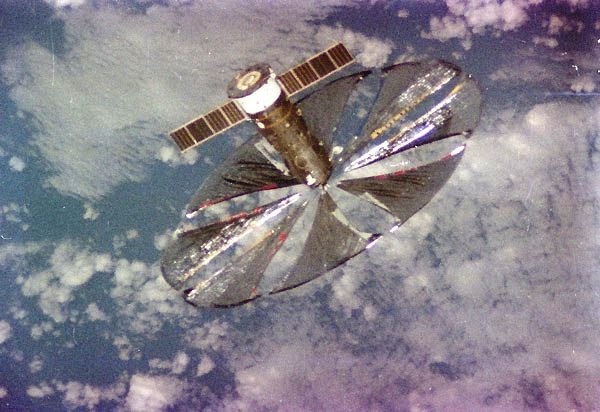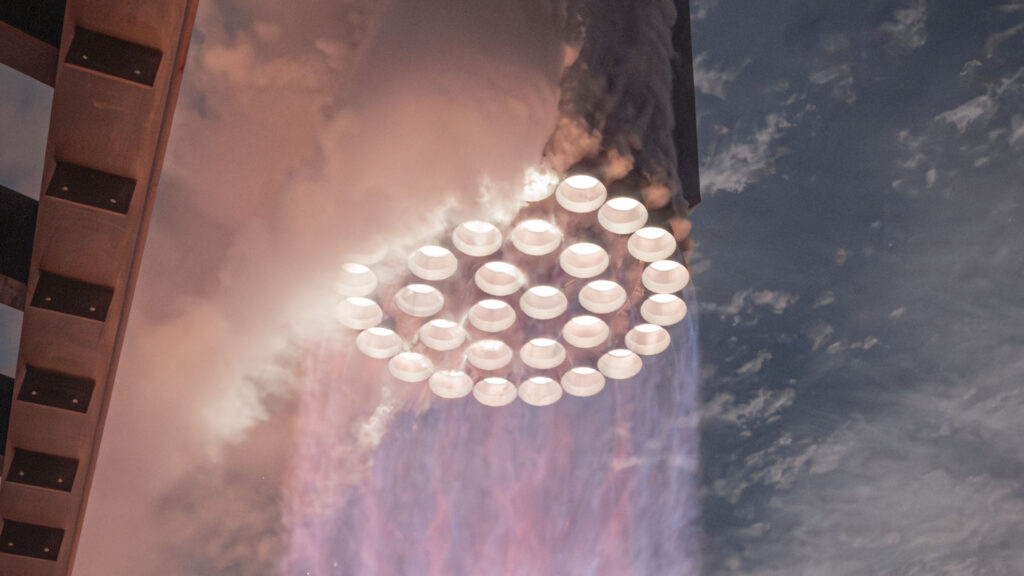Space umbrellas, spread of sulfur dioxide in the atmosphere, Acid rain, climate impacts, white skies. We have some great ideas for changing the climate, but are they good? That’s what this article from The Conversation explores.
Concern about climate change is growing and unfortunately giving rise to projects that are as grandiose as they are alarming. Geoengineering, that is to say interventions on the scale of the entire planet thanks to technology, proves fertile in ideas, but despite everything controversial.
Advertisement
If the Earth is warming, it is because it receives more energy from the Sun than it emits towards space: we say that it is no longer in “radiative equilibrium”. According to the IPCCthis situation is undoubtedly the consequence of the accumulation in the atmosphere of greenhouse gases emitted by humanity since the beginning of the industrial era.
To reduce the energy imbalance of the Earth system, named radiative forcing, geoengineering proposes, for example, to limit the solar radiation hitting the Earth or to send more of it back into space. It would be possible, among other things, to deploy space umbrellas ormassively inject into the stratosphere an aerosol diffusing solar light: sulfur dioxide. Do these proposals have any relevance?
To answer this question, let's apply a very effective general analysis grid to these two projects. On the one hand, do these techniques respect the principles of physics? If so, do we know how to make a prototype? And in this case, can they be industrialized and implemented on a large scale with a view to having a real impact? In other words: are they practically feasible?
On the other hand, will we see a gain in terms of materials, energy, environment, including considering a possible rebound effect? Will they make humans more autonomous or will they generate inequalities and perverse effects against certain populations? Will they help avoid pollution, nuisances and waste, in the short and long term? In short, would they have beneficial repercussions?
Advertisement
Space umbrellas: shading the Earth
A first proposal would consist of interposing between the Sun and the Earth a sort of parasol reducing the solar radiation hitting our planet. On paper, it's simple and it respects known physical principles: small examples are commonly used to limit the heating of satellites, including the famous space telescope. James Webb. The deployment of a large reflective structure has already been successful by the Russian project Znamiadeveloped for another purpose in the 1990s.

The problem comes with industrialization. For space umbrellas to have a significant impact, they would have to have a gigantic total area. The costs and resources necessary to achieve a sufficient effect would therefore also become disproportionate. To reduce these costs, the Planetary Sunshade Foundation (PSF) proposes to place a single space umbrella 1.5 million kilometers from Earth towards the Sun, at the location called Lagrange point L1. PSF thus estimates that it can reduce the solar flux by approximately 1% for a parasol with a radius of 650 kilometers. This figure seems small, but it is very important: it would compensate five times the radiative imbalance caused by all the greenhouse gases emitted by humanity since the beginning of the industrial era.
A difficult prototype to industrialize
Of the Swedish researchers estimate that the cost of such an operation could be between 5,000 and 10,000 billion dollars… which would be conceivable if it absolutely had to go through this to save human life on the planet. But where does this figure come from? This is because, in the minimum version of the project, 34 million tonnes of mirrors must be sent into space. However, since the beginning of the space age, humanity has only sent into space 16,500 tonnes of material. Furthermore, even Starship, SpaceX's super-heavy launcher still in development, will only be able to send 100 tons at a time. It would therefore take 340,000 launches of this rocket to achieve this!
Finally, this parasol would have other major disadvantages: its installation will use a gigantic quantity of materials and energy, the extraction and use of which would aggravate the warming that it aims to reduce. Above all, it would provoke the known reaction which cancels the positive gains of a technical solution: therebound effect. Indeed, if we believed we had avoided global warming, this would risk leading to a relaxation of efforts (already too weak) to reduce greenhouse gas emissions. However, if economic growth continues, and the exponential increase in greenhouse gas emissions with it, no progress will have been made.


Sulfur dioxide: an effective solution on paper
As for the second proposal, which consists of sending sulfur dioxide (SO₂) in the upper atmosphere, it has long been known that its physical principle is valid: it can actually cause global cooling. This is because sulfur aerosols scatter sunlight and act as cloud condensation nuclei, making them more frequent and longer lasting. It is for this reason that the eruption of the Philippine volcano Pinatubo in 1991 produced significant cooling on a global scale: in 1992-1993, the decrease in average ground temperature was estimated between 0.5 and 0.6°C in the northern hemisphere and 0.4°C across the globe.
And the prototype is doable… almost too easily. Without asking permission from anyone, the American start-up Make Sunsets tested the sending of sulfur particles into the stratosphere from Mexican soil. Based on this demonstration, it offers companies that emit carbon to offset their emissions, in return for money. Mexico reacted vigorously, but the start-up still exists. This scenario is the subject of the science fiction novel Terminal shockby Neal Stephenson.
Additionally, it is feasible to emit sulfur on a large scale. Human activity has already led to the emission of quantities of SO₂ sufficient to induce a significant effect and mask part of the ongoing global warming. The IPCC even calculated the cooling caused by aerosol emissions. It is precisely the effectiveness of this effect that emission rights dealers highlight.


Acid rain, climate impacts, white skies… Why play sorcerer’s apprentice?
The problem with expected long-term profits is also due to the rebound effect. In addition, offsetting CO emissions2 (and other greenhouse gases) through SO emissions2 don't stop the first ones. By treating the symptoms, but not the cause, we condemn ourselves to constantly sending SO2 in the stratosphere. By inflicting on future generations this task worthy of the Danaids, condemned to endlessly filling a barrel with holes, we definitively amputate their autonomy.
Furthermore, the impact on regional climates of such large-scale action is as difficult to anticipate as that of global warming. For example, agricultural yields could collapse, or the rains disappear.
Above all, sulfur dioxide causes acid rain which destroy forestsand is not good for breathing: the quality of the air depends, among other things, on its content of SO particles2. Reducing these emissions is rightly the subject of public policy. Since 2020, SO emissions2 international maritime transport decreased by approximately 80% thanks to new regulations from the International Maritime Organization. Those of France followed the same path beneficial for public health.
Another consequence, aesthetic and tragic: sulfur aerosols suspended in the atmosphere would diffuse sunlight in all directions. The color of the sky would change, going from blue to white. Although technologically feasible, this solution is therefore rejected by our analysis grid, because it generates new nuisances and pollution.


What conclusion?
Our analysis grid of “false good ideas” applies not only to solar radiation modification technologies, but to all technologies. Reflecting solar radiation, triggering rain by sowing particles in the clouds, capturing or storing carbon, genetically modifying plants, or even placing reflective blankets on glaciers (as Switzerland has already done at an exorbitant cost): all this must be sifted through this grid. Technosolutionism, that is to say the belief that technology will save us from the damage of technology, can endanger the entire living world, humanity included. It must be replaced by a rational analysis which leads to the banning of these games of sorcerers' apprentices which do not survive analysis. Let us replace the illusory “green” growth with a path compatible with physical constraints: that of degrowth.


This article benefited from discussions with François Briens (economist and energy systems engineer), Jean-Manuel Traimond (author and speaker) and Aurélien Ficot (grocer-bookseller).
Emmanuelle RioTeacher-researcher, Paris-Saclay University; Francois GranerCNRS Research Director, Paris City University And Roland LehoucqResearcher in astrophysics, Atomic Energy and Alternative Energies Commission (CEA)
This article is republished from The Conversation under Creative Commons license. Read theoriginal article.
